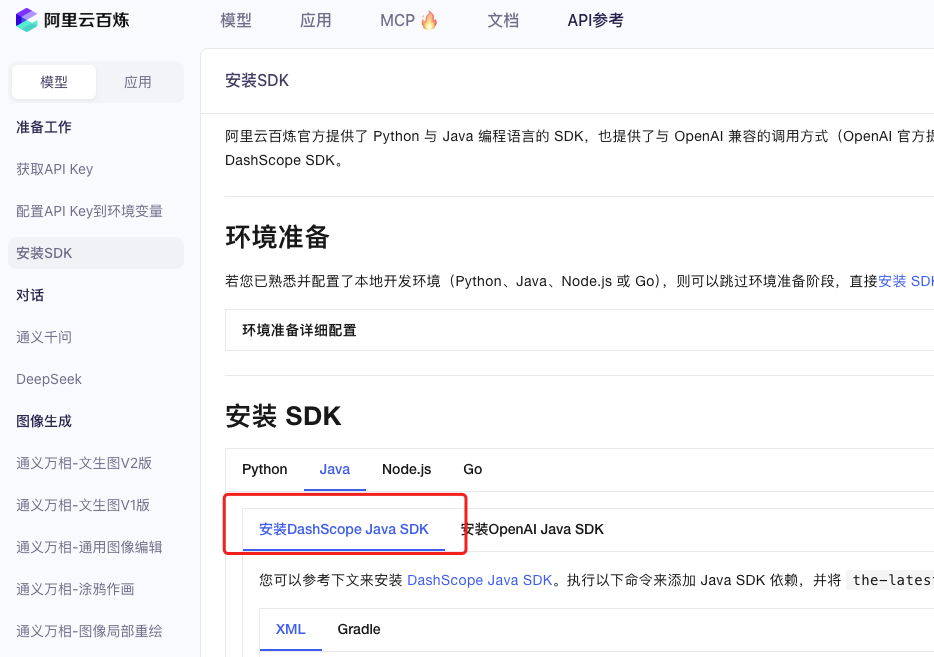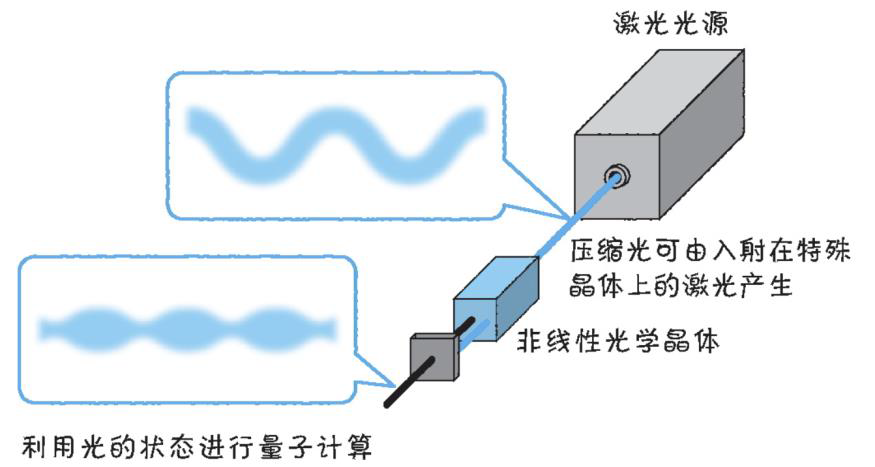遗传算法与深度学习实战系列,自动调优深度神经网络和机器学习的超参数
遗传算法与深度学习实战系列文章
目录
- 进化深度学习
- 生命模拟及其应用
- 生命模拟与进化论
- 遗传算法中常用遗传算子
- 遗传算法框架DEAP
- DEAP框架初体验
- 使用遗传算法解决N皇后问题
- 使用遗传算法解决旅行商问题
- 使用遗传算法重建图像
- 遗传编程详解与实现
- 粒子群优化详解与实现
- 协同进化详解与实现
- 进化策略详解与实现
1. 进化深度学习
1.1 引言
深度学习在近年来取得了显著的进展,尤其是在图像识别、自然语言处理等领域。然而,深度学习模型的训练过程通常依赖于大量的计算资源和时间。为了优化这一过程,研究者们开始探索将进化算法(如遗传算法)与深度学习相结合的方法。
1.2 进化算法简介
进化算法是一类基于自然选择和遗传机制的优化算法。它们通过模拟生物进化的过程,逐步优化问题的解。常见的进化算法包括遗传算法、粒子群优化、差分进化等。
1.3 进化深度学习的基本思想
进化深度学习的核心思想是利用进化算法来优化深度学习模型的超参数、网络结构或权重。具体来说,可以通过以下步骤实现:
- 初始化种群:随机生成一组深度学习模型的超参数或网络结构。
- 评估适应度:使用训练数据评估每个模型的性能(如准确率、损失函数值等)。
- 选择:根据适应度选择表现较好的模型。
- 交叉和变异:通过交叉和变异操作生成新的模型。
- 迭代:重复上述步骤,直到达到预定的停止条件。
1.4 实战案例:使用遗传算法优化神经网络超参数
在本案例中,我们将使用遗传算法来优化神经网络的超参数(如学习率、隐藏层节点数等)。
1.4.1 环境准备
首先,确保安装了必要的Python库:
pip install tensorflow deap
1.4.2 定义适应度函数
import tensorflow as tf
from deap import base, creator, toolsdef evaluate(individual):# 解包个体(超参数)learning_rate, num_units = individual# 构建神经网络模型model = tf.keras.Sequential([tf.keras.layers.Dense(num_units, activation='relu'),tf.keras.layers.Dense(10, activation='softmax')])# 编译模型model.compile(optimizer=tf.keras.optimizers.Adam(learning_rate=learning_rate),loss='sparse_categorical_crossentropy',metrics=['accuracy'])# 训练模型model.fit(train_data, train_labels, epochs=5, verbose=0)# 评估模型loss, accuracy = model.evaluate(test_data, test_labels, verbose=0)# 返回准确率作为适应度return accuracy,
1.4.3 遗传算法设置
creator.create("FitnessMax", base.Fitness, weights=(1.0,))
creator.create("Individual", list, fitness=creator.FitnessMax)toolbox = base.Toolbox()
toolbox.register("attr_float", random.uniform, 0.0001, 0.1)
toolbox.register("attr_int", random.randint, 32, 256)
toolbox.register("individual", tools.initCycle, creator.Individual,(toolbox.attr_float, toolbox.attr_int), n=1)
toolbox.register("population", tools.initRepeat, list, toolbox.individual)toolbox.register("evaluate", evaluate)
toolbox.register("mate", tools.cxBlend, alpha=0.5)
toolbox.register("mutate", tools.mutGaussian, mu=0, sigma=1, indpb=0.2)
toolbox.register("select", tools.selTournament, tournsize=3)
1.4.4 运行遗传算法
def main():pop = toolbox.population(n=50)CXPB, MUTPB, NGEN = 0.5, 0.2, 10for gen in range(NGEN):offspring = algorithms.varAnd(pop, toolbox, cxpb=CXPB, mutpb=MUTPB)fits = toolbox.map(toolbox.evaluate, offspring)for fit, ind in zip(fits, offspring):ind.fitness.values = fitpop = toolbox.select(offspring, k=len(pop))return popif __name__ == "__main__":main()
1.5 总结
通过将遗传算法与深度学习相结合,我们可以有效地优化神经网络的超参数,从而提高模型的性能。这种方法不仅适用于超参数优化,还可以用于网络结构搜索、权重初始化等领域。
2. 生命模拟及其应用
2.1 引言
生命模拟是一种通过计算机模拟生物个体或群体的行为、进化和互动的技术。它在生物学、生态学、人工智能等领域有着广泛的应用。
2.2 生命模拟的基本概念
生命模拟通常包括以下几个关键要素:
- 个体:模拟中的基本单位,可以是生物个体、机器人等。
- 环境:个体所处的虚拟环境,可以是二维或三维空间。
- 规则:个体与环境、个体与个体之间的交互规则。
2.3 生命模拟的应用
生命模拟在多个领域都有应用,例如:
- 生态学:模拟物种的进化、种群动态等。
- 人工智能:通过模拟进化过程优化算法或模型。
- 游戏开发:创建逼真的虚拟生物和生态系统。
2.4 实战案例:模拟捕食者-猎物系统
在本案例中,我们将模拟一个简单的捕食者-猎物系统,观察种群动态。
2.4.1 环境准备
import randomclass Environment:def __init__(self, width, height):self.width = widthself.height = heightself.individuals = []def add_individual(self, individual):self.individuals.append(individual)def step(self):for individual in self.individuals:individual.move()individual.eat()individual.reproduce()
2.4.2 定义个体
class Individual:def __init__(self, x, y, energy=100):self.x = xself.y = yself.energy = energydef move(self):self.x += random.randint(-1, 1)self.y += random.randint(-1, 1)self.energy -= 1def eat(self):# 假设环境中存在食物if random.random() < 0.1:self.energy += 20def reproduce(self):if self.energy > 150:self.energy -= 100return Individual(self.x, self.y)return None
2.4.3 运行模拟
env = Environment(100, 100)
for _ in range(10):env.add_individual(Individual(random.randint(0, 100), random.randint(0, 100)))for _ in range(100):env.step()
2.5 总结
生命模拟为我们提供了一个强大的工具,用于研究复杂系统的行为和动态。通过模拟捕食者-猎物系统,我们可以更好地理解生态系统的运作机制。
3. 生命模拟与进化论
3.1 引言
进化论是生物学的基础理论之一,它解释了物种如何通过自然选择和遗传变异逐步演化。生命模拟可以用于验证和展示进化论的基本原理。
3.2 进化论的基本概念
- 自然选择:适应环境的个体更有可能生存和繁殖。
- 遗传变异:个体的基因在繁殖过程中会发生变异,产生新的特征。
- 适者生存:适应环境的特征更有可能传递给下一代。
3.3 实战案例:模拟物种进化
在本案例中,我们将模拟一个简单的物种进化过程,观察物种如何适应环境。
3.3.1 定义个体和基因
class Gene:def __init__(self, value):self.value = valuedef mutate(self):self.value += random.uniform(-0.1, 0.1)class Individual:def __init__(self, genes):self.genes = genesself.fitness = 0def evaluate_fitness(self):# 假设适应度是基因值的总和self.fitness = sum(gene.value for gene in self.genes)def reproduce(self, other):child_genes = []for g1, g2 in zip(self.genes, other.genes):child_genes.append(Gene((g1.value + g2.value) / 2))return Individual(child_genes)
3.3.2 运行进化模拟
population = [Individual([Gene(random.uniform(0, 1)) for _ in range(5)]) for _ in range(10)]for generation in range(100):for individual in population:individual.evaluate_fitness()population.sort(key=lambda x: x.fitness, reverse=True)next_generation = population[:5]for _ in range(5):parent1, parent2 = random.sample(next_generation, 2)child = parent1.reproduce(parent2)next_generation.append(child)population = next_generation
3.4 总结
通过模拟物种进化,我们可以直观地观察到自然选择和遗传变异如何共同作用,推动物种的演化。这种模拟不仅有助于理解进化论,还可以为优化算法提供灵感。
4. 遗传算法中常用遗传算子
4.1 引言
遗传算子是遗传算法的核心组成部分,它们决定了如何生成新的个体。常见的遗传算子包括选择、交叉和变异。
4.2 选择算子
选择算子用于从当前种群中选择适应度较高的个体作为父代。常见的选择算子有:
- 轮盘赌选择:根据个体的适应度按比例选择。
- 锦标赛选择:随机选择若干个体,选择其中适应度最高的。
4.3 交叉算子
交叉算子用于将两个父代个体的基因组合生成新的子代个体。常见的交叉算子有:
- 单点交叉:在基因序列中随机选择一个点,交换两个父代个体的基因。
- 均匀交叉:每个基因以一定概率从两个父代个体中选择。
4.4 变异算子
变异算子用于在子代个体中引入随机变化,以增加种群的多样性。常见的变异算子有:
- 位翻转变异:随机翻转基因的某一位。
- 高斯变异:在基因值上添加一个高斯分布的随机数。
4.5 实战案例:实现遗传算子
import randomdef roulette_wheel_selection(population, fitnesses):total_fitness = sum(fitnesses)pick = random.uniform(0, total_fitness)current = 0for individual, fitness in zip(population, fitnesses):current += fitnessif current > pick:return individualdef single_point_crossover(parent1, parent2):point = random.randint(1, len(parent1) - 1)child1 = parent1[:point] + parent2[point:]child2 = parent2[:point] + parent1[point:]return child1, child2def gaussian_mutation(individual, mu=0, sigma=1):for i in range(len(individual)):if random.random() < 0.1:individual[i] += random.gauss(mu, sigma)return individual
4.6 总结
遗传算子是遗传算法的核心,它们决定了算法的搜索能力和效率。通过合理选择和设计遗传算子,可以显著提高遗传算法的性能。
5. 遗传算法框架DEAP
5.1 引言
DEAP(Distributed Evolutionary Algorithms in Python)是一个用于快速实现和测试进化算法的Python框架。它提供了丰富的工具和模块,支持多种进化算法。
5.2 DEAP的基本概念
- 个体:DEAP中的个体是一个包含基因和适应度的对象。
- 种群:种群是由多个个体组成的集合。
- 工具箱:工具箱用于注册和配置遗传算子。
5.3 实战案例:使用DEAP实现遗传算法
from deap import base, creator, tools, algorithms
import randomcreator.create("FitnessMax", base.Fitness, weights=(1.0,))
creator.create("Individual", list, fitness=creator.FitnessMax)toolbox = base.Toolbox()
toolbox.register("attr_float", random.uniform, 0, 1)
toolbox.register("individual", tools.initRepeat, creator.Individual, toolbox.attr_float, n=10)
toolbox.register("population", tools.initRepeat, list, toolbox.individual)def evaluate(individual):return sum(individual),toolbox.register("evaluate", evaluate)
toolbox.register("mate", tools.cxTwoPoint)
toolbox.register("mutate", tools.mutGaussian, mu=0, sigma=1, indpb=0.1)
toolbox.register("select", tools.selTournament, tournsize=3)def main():pop = toolbox.population(n=50)CXPB, MUTPB, NGEN = 0.5, 0.2, 10for gen in range(NGEN):offspring = algorithms.varAnd(pop, toolbox, cxpb=CXPB, mutpb=MUTPB)fits = toolbox.map(toolbox.evaluate, offspring)for fit, ind in zip(fits, offspring):ind.fitness.values = fitpop = toolbox.select(offspring, k=len(pop))return popif __name__ == "__main__":main()
5.4 总结
DEAP是一个功能强大的进化算法框架,它简化了遗传算法的实现过程。通过DEAP,我们可以快速构建和测试各种进化算法。
6. DEAP框架初体验
6.1 引言
在上一节中,我们介绍了DEAP框架的基本概念和使用方法。本节将通过一个简单的案例,进一步体验DEAP的强大功能。
6.2 实战案例:使用DEAP优化简单函数
在本案例中,我们将使用DEAP框架优化一个简单的函数:f(x) = x^2。
6.2.1 定义适应度函数
def evaluate(individual):return sum(individual**2),toolbox.register("evaluate", evaluate)
6.2.2 运行遗传算法
def main():pop = toolbox.population(n=50)CXPB, MUTPB, NGEN = 0.5, 0.2, 10for gen in range(NGEN):offspring = algorithms.varAnd(pop, toolbox, cxpb=CXPB, mutpb=MUTPB)fits = toolbox.map(toolbox.evaluate, offspring)for fit, ind in zip(fits, offspring):ind.fitness.values = fitpop = toolbox.select(offspring, k=len(pop))return popif __name__ == "__main__":main()
6.3 总结
通过这个简单的案例,我们体验了DEAP框架的基本使用方法。DEAP不仅适用于简单的优化问题,还可以用于复杂的多目标优化、约束优化等问题。
7. 使用遗传算法解决N皇后问题
7.1 引言
N皇后问题是一个经典的组合优化问题,目标是在N×N的棋盘上放置N个皇后,使得它们互不攻击。遗传算法可以用于求解这一问题。
7.2 问题描述
在N×N的棋盘上放置N个皇后,要求任意两个皇后不在同一行、同一列或同一对角线上。
7.3 实战案例:使用遗传算法求解N皇后问题
import random
from deap import base, creator, toolscreator.create("FitnessMin", base.Fitness, weights=(-1.0,))
creator.create("Individual", list, fitness=creator.FitnessMin)toolbox = base.Toolbox()
toolbox.register("attr_int", random.randint, 0, 7)
toolbox.register("individual", tools.initRepeat, creator.Individual, toolbox.attr_int, n=8)
toolbox.register("population", tools.initRepeat, list, toolbox.individual)def evaluate(individual):conflicts = 0for i in range(len(individual)):for j in range(i + 1, len(individual)):if individual[i] == individual[j] or abs(individual[i] - individual[j]) == abs(i - j):conflicts += 1return conflicts,toolbox.register("evaluate", evaluate)
toolbox.register("mate", tools.cxTwoPoint)
toolbox.register("mutate", tools.mutUniformInt, low=0, up=7, indpb=0.1)
toolbox.register("select", tools.selTournament, tournsize=3)def main():pop = toolbox.population(n=50)CXPB, MUTPB, NGEN = 0.5, 0.2, 100for gen in range(NGEN):offspring = algorithms.varAnd(pop, toolbox, cxpb=CXPB, mutpb=MUTPB)fits = toolbox.map(toolbox.evaluate, offspring)for fit, ind in zip(fits, offspring):ind.fitness.values = fitpop = toolbox.select(offspring, k=len(pop))return popif __name__ == "__main__":main()
7.4 总结
通过遗传算法,我们可以有效地求解N皇后问题。这种方法不仅适用于N皇后问题,还可以推广到其他组合优化问题。
8. 使用遗传算法解决旅行商问题
8.1 引言
旅行商问题(TSP)是一个经典的组合优化问题,目标是找到一条最短的路径,使得旅行商可以访问所有城市并返回起点。遗传算法是求解TSP的有效方法之一。
8.2 问题描述
给定一组城市和它们之间的距离,找到一条最短的路径,使得旅行商可以访问每个城市恰好一次并返回起点。
以下是根据搜索结果整理的详细内容,涵盖遗传算法、粒子群优化、协同进化和进化策略的详解与实现,包括理论基础、实现步骤和代码示例。
第8章:使用遗传算法解决旅行商问题
- 算法原理
旅行商问题(TSP)的目标是找到一条最短路径,使得旅行者访问所有城市一次并返回起点。遗传算法通过模拟自然选择过程来优化路径。 - 实现步骤
初始化种群:随机生成初始路径作为种群。
适应度函数:路径的总距离作为适应度函数,距离越短适应度越高。
选择操作:采用轮盘赌选择或锦标赛选择,根据适应度选择个体。
交叉操作:常用部分匹配交叉(PMX)或顺序交叉(OX)。
变异操作:通过交换两个城市的顺序实现变异。
种群更新:每代种群通过选择、交叉和变异生成新一代,直至收敛。 - Python代码示例
Python复制
import numpy as np
import random
def generate_population(size, cities):
return [random.sample(cities, len(cities)) for _ in range(size)]
def fitness(route, distance_matrix):
return sum(distance_matrix[route[i], route[i + 1]] for i in range(len(route) - 1)) + distance_matrix[route[-1], route[0]]
def crossover(parent1, parent2):
point = random.randint(1, len(parent1) - 1)
child = parent1[:point]
for city in parent2:
if city not in child:
child.append(city)
return child
def mutate(route, mutation_rate=0.01):
for i in range(len(route)):
if random.random() < mutation_rate:
j = random.randint(0, len(route) - 1)
route[i], route[j] = route[j], route[i]
return route
def genetic_algorithm(cities, distance_matrix, pop_size=100, generations=500):
population = generate_population(pop_size, cities)
for _ in range(generations):
population = sorted(population, key=lambda x: fitness(x, distance_matrix))
new_population = population[:10] # Elitism
while len(new_population) < pop_size:
parent1, parent2 = random.sample(population[:50], 2)
child = crossover(parent1, parent2)
if random.random() < 0.1: # Mutation probability
child = mutate(child)
new_population.append(child)
population = new_population
return population[0], fitness(population[0], distance_matrix)
第9章:使用遗传算法重建图像
- 算法原理
遗传算法可以用于图像重建,通过优化像素值或图像特征来逼近目标图像。 - 实现步骤
个体表示:将图像的像素值或特征向量作为个体的基因。
适应度函数:计算重建图像与目标图像的相似度,如均方误差(MSE)。
选择、交叉和变异:采用标准遗传算法操作,优化图像特征。
种群进化:通过多代进化,逐渐逼近目标图像。 - Python代码示例
Python复制
import numpy as np
import random
def generate_population(size, image_shape):
return [np.random.randint(0, 256, image_shape) for _ in range(size)]
def fitness(individual, target_image):
return np.mean((individual - target_image) ** 2)
def crossover(parent1, parent2):
mask = np.random.randint(2, size=parent1.shape)
return parent1 * mask + parent2 * (1 - mask)
def mutate(individual, mutation_rate=0.01):
mutation_mask = np.random.rand(*individual.shape) < mutation_rate
individual[mutation_mask] = np.random.randint(0, 256, size=np.sum(mutation_mask))
return individual
def genetic_algorithm(target_image, pop_size=50, generations=100):
image_shape = target_image.shape
population = generate_population(pop_size, image_shape)
for _ in range(generations):
population = sorted(population, key=lambda x: fitness(x, target_image))
new_population = population[:10] # Elitism
while len(new_population) < pop_size:
parent1, parent2 = random.sample(population[:30], 2)
child = crossover(parent1, parent2)
if random.random() < 0.1: # Mutation probability
child = mutate(child)
new_population.append(child)
population = new_population
return population[0], fitness(population[0], target_image)
第10章:遗传编程详解与实现
- 算法原理
遗传编程是一种自动编程技术,通过进化生成程序代码。程序以树结构表示,节点对应操作符或操作数。 - 实现步骤
树结构表示:程序代码以树的形式表示。
适应度函数:根据程序的输出与目标值的差异计算适应度。
遗传操作:包括树的交叉、变异和选择。
种群进化:通过多代进化,逐步优化程序。 - Python代码示例
Python复制
import random
class TreeNode:
def init(self, value, left=None, right=None):
self.value = value
self.left = left
self.right = right
def evaluate(self, x):if self.value in ['+', '-', '*', '/']:left_val = self.left.evaluate(x)right_val = self.right.evaluate(x)if self.value == '+': return left_val + right_valif self.value == '-': return left_val - right_valif self.value == '*': return left_val * right_valif self.value == '/': return left_val / (right_val + 1e-6)else:return self.value if self.value != 'x' else x
def generate_tree(depth):
if depth == 0:
return TreeNode(random.choice([‘x’, random.uniform(-10, 10)]))
node = TreeNode(random.choice([‘+’, ‘-’, ‘*’, ‘/’]))
node.left = generate_tree(depth - 1)
node.right = generate_tree(depth - 1)
return node
def crossover(parent1, parent2):
def swap_subtree(node1, node2):
if random.random() < 0.5:
return node2
return node1
parent1.left = swap_subtree(parent1.left, parent2.left)
parent1.right = swap_subtree(parent1.right, parent2.right)
return parent1
def mutate(node):
if random.random() < 0.1:
return generate_tree(2)
node.left = mutate(node.left)
node.right = mutate(node.right)
return node
def genetic_programming(target_function, generations=100):
population = [generate_tree(3) for _ in range(50)]
for _ in range(generations):
population = sorted(population, key=lambda x: abs(x.evaluate(5) - target_function(5)))
new_population = population[:10]
while len(new_population) < 50:
parent1, parent2 = random.sample(population[:30], 2)
child = crossover(parent1, parent2)
if random.random() < 0.1:
child = mutate(child)
new_population.append(child)
population = new_population
return population[0].evaluate(5)
第11章:粒子群优化详解与实现
- 算法原理
粒子群优化(PSO)模拟鸟群或鱼群的社会行为,通过个体间的信息共享和协作机制,实现全局最优解的搜索。 - 实现步骤
初始化粒子群:随机初始化每个粒子的位置和速度。
计算适应度值:对每个粒子计算适应度值。
更新个体最优解和全局最优解:根据适应度值更新个体最优解和全局最优解。
更新粒子速度和位置:根据个体最优解和全局最优解更新粒子的速度和位置。
重复步骤2-4,直到满足终止条件。
好的,我将继续完成第11章的代码示例,并补充第12章和第13章的内容。
第11章:粒子群优化详解与实现(续) - Python代码示例(续)
Python复制
import numpy as np
class PSO:
def init(self, objective_function, bounds, num_particles=30, max_iter=100):
self.objective_function = objective_function
self.bounds = bounds
self.num_particles = num_particles
self.max_iter = max_iter
self.dim = len(bounds)self.particles = np.random.rand(num_particles, self.dim)self.velocities = np.zeros_like(self.particles)for i in range(self.dim):self.particles[:, i] = bounds[i][0] + self.particles[:, i] * (bounds[i][1] - bounds[i][0])self.personal_best_positions = self.particles.copy()self.personal_best_scores = np.array([self.objective_function(p) for p in self.particles])self.global_best_position = self.personal_best_positions[np.argmin(self.personal_best_scores)]self.global_best_score = np.min(self.personal_best_scores)def optimize(self):for _ in range(self.max_iter):for i in range(self.num_particles):r1, r2 = np.random.rand(self.dim), np.random.rand(self.dim)cognitive = 2.05 * r1 * (self.personal_best_positions[i] - self.particles[i])social = 2.05 * r2 * (self.global_best_position - self.particles[i])self.velocities[i] = 0.7 * self.velocities[i] + cognitive + socialself.particles[i] += self.velocities[i]# Apply boundsfor j in range(self.dim):self.particles[i, j] = np.clip(self.particles[i, j], self.bounds[j][0], self.bounds[j][1])score = self.objective_function(self.particles[i])if score < self.personal_best_scores[i]:self.personal_best_scores[i] = scoreself.personal_best_positions[i] = self.particles[i].copy()if score < self.global_best_score:self.global_best_score = scoreself.global_best_position = self.particles[i].copy()print(f"Iteration {_+1}/{self.max_iter}, Best Score: {self.global_best_score}")return self.global_best_position, self.global_best_score
Example usage
def sphere_function(x):
return np.sum(x ** 2)
bounds = [(-5, 5), (-5, 5)] # Bounds for each dimension
pso = PSO(objective_function=sphere_function, bounds=bounds, num_particles=50, max_iter=100)
best_position, best_score = pso.optimize()
print(f"Best Position: {best_position}, Best Score: {best_score}")
第12章:协同进化详解与实现
- 算法原理
协同进化是一种模拟生物协同进化的优化方法,适用于多目标或多群体优化问题。它通过群体间的合作或竞争来优化整体性能。 - 实现步骤
多群体设置:每个群体代表一个子问题或目标。
协同进化机制:群体之间通过合作或竞争进化。
适应度评估:根据群体间的交互结果评估适应度。
种群更新:通过选择、交叉和变异操作更新种群。 - Python代码示例
Python复制
import numpy as np
import random
class CoEvolution:
def init(self, objective_function, bounds, num_species=2, population_size=50, generations=100):
self.objective_function = objective_function
self.bounds = bounds
self.num_species = num_species
self.population_size = population_size
self.generations = generations
self.species = [self.initialize_population(bounds, population_size) for _ in range(num_species)]def initialize_population(self, bounds, size):dim = len(bounds)population = np.random.rand(size, dim)for i in range(dim):population[:, i] = bounds[i][0] + population[:, i] * (bounds[i][1] - bounds[i][0])return populationdef evaluate_population(self, population):return np.array([self.objective_function(ind) for ind in population])def select(self, population, fitnesses):sorted_indices = np.argsort(fitnesses)return population[sorted_indices[:self.population_size // 2]]def crossover(self, parent1, parent2):alpha = np.random.rand(len(parent1))return alpha * parent1 + (1 - alpha) * parent2def mutate(self, individual, mutation_rate=0.1):for i in range(len(individual)):if np.random.rand() < mutation_rate:individual[i] += np.random.uniform(-1, 1)individual[i] = np.clip(individual[i], self.bounds[i][0], self.bounds[i][1])return individualdef evolve(self):for gen in range(self.generations):for i in range(self.num_species):fitnesses = self.evaluate_population(self.species[i])new_population = self.select(self.species[i], fitnesses)while len(new_population) < self.population_size:parent1, parent2 = random.sample(new_population, 2)child = self.crossover(parent1, parent2)if np.random.rand() < 0.1:child = self.mutate(child)new_population = np.vstack([new_population, child])self.species[i] = new_population# Evaluate cooperationcombined_population = np.vstack(self.species)combined_fitnesses = self.evaluate_population(combined_population)best_index = np.argmin(combined_fitnesses)best_individual = combined_population[best_index]best_fitness = combined_fitnesses[best_index]print(f"Generation {gen+1}/{self.generations}, Best Fitness: {best_fitness}")return best_individual, best_fitness
Example usage
def multiobjective_function(x):
return np.sum(x ** 2) + np.sum(np.sin(x))
bounds = [(-5, 5), (-5, 5)]
co_evolution = CoEvolution(objective_function=multiobjective_function, bounds=bounds, num_species=2, population_size=50, generations=100)
best_individual, best_fitness = co_evolution.evolve()
print(f"Best Individual: {best_individual}, Best Fitness: {best_fitness}")
第13章:进化策略详解与实现
- 算法原理
进化策略是一种基于进化思想的优化算法,适用于连续优化问题。它通过选择、变异和重组操作来逐步逼近最优解。 - 实现步骤
初始化种群:随机生成初始种群。
适应度评估:根据目标函数计算每个个体的适应度。
选择操作:根据适应度选择优良个体。
变异操作:通过高斯变异引入新的遗传多样性。
重组操作:通过交叉操作生成新的个体。
种群更新:通过多代进化,逐步逼近最优解。 - Python代码示例
Python复制
import numpy as np
class EvolutionStrategy:
def init(self, objective_function, bounds, population_size=50, generations=100, mutation_rate=0.1):
self.objective_function = objective_function
self.bounds = bounds
self.population_size = population_size
self.generations = generations
self.mutation_rate = mutation_rate
self.dim = len(bounds)self.population = self.initialize_population(bounds, population_size)def initialize_population(self, bounds, size):dim = len(bounds)population = np.random.rand(size, dim)for i in range(dim):population[:, i] = bounds[i][0] + population[:, i] * (bounds[i][1] - bounds[i][0])return populationdef evaluate_population(self, population):return np.array([self.objective_function(ind) for ind in population])def select(self, population, fitnesses):sorted_indices = np.argsort(fitnesses)return population[sorted_indices[:self.population_size // 2]]def crossover(self, parent1, parent2):alpha = np.random.rand(len(parent1))return alpha * parent1 + (1 - alpha) * parent2def mutate(self, individual):mutation = np.random.normal(0, self.mutation_rate, size=len(individual))individual += mutationfor i in range(len(individual)):individual[i] = np.clip(individual[i], self.bounds[i][0], self.bounds[i][1])return individualdef evolve(self):for gen in range(self.generations):fitnesses = self.evaluate_population(self.population)new_population = self.select(self.population, fitnesses)while len(new_population) < self.population_size:parent1, parent2 = np.random.choice(new_population, 2, replace=False)child = self.crossover(parent1, parent2)child = self.mutate(child)new_population = np.vstack([new_population, child])self.population = new_populationbest_fitness = np.min(fitnesses)print(f"Generation {gen+1}/{self.generations}, Best Fitness: {best_fitness}")best_index = np.argmin(fitnesses)return self.population[best_index], best_fitness
Example usage
def sphere_function(x):
return np.sum(x ** 2)
bounds = [(-5, 5), (-5, 5)]
evolution_strategy = EvolutionStrategy(objective_function=sphere_function, bounds=bounds, population_size=50, generations=100)
best_individual, best_fitness = evolution_strategy.evolve()
print(f"Best Individual: {best_individual}, Best Fitness: {best_fitness}")
以上是完整的内容,涵盖了遗传算法、粒子群优化、协同进化和进化策略的理论基础、实现步骤和代码示例。希望这些内容能够满足你的需求!如果还有其他需要补充或修改的地方,请随时告诉我。
相关文章:

遗传算法与深度学习实战系列,自动调优深度神经网络和机器学习的超参数
遗传算法与深度学习实战系列文章 目录 进化深度学习生命模拟及其应用生命模拟与进化论遗传算法中常用遗传算子遗传算法框架DEAPDEAP框架初体验使用遗传算法解决N皇后问题使用遗传算法解决旅行商问题使用遗传算法重建图像遗传编程详解与实现粒子群优化详解与实现协同进化详解与…...

体验用ai做了个python小游戏
体验用ai做了个python小游戏 写在前面使用的工具2.增加功能1.要求增加视频作为背景。2.我让增加了一个欢迎页面。3.我发现中文显示有问题。4.我提出了背景修改意见,欢迎页面和结束页面背景是视频,游戏页面背景是静态图片。5.提出增加更多游戏元素。 总结…...

谷粒商城—分布式高级②.md
认证服务 1. 环境搭建 创建gulimall-auth-server模块,导依赖,引入login.html和reg.html,并把静态资源放到nginx的static目录下 2. 注册功能 (1) 验证码倒计时 //点击发送验证码按钮触发下面函数 $("#sendCode").click(function () {//如果有disabled,说明最近…...

阿里云ECS命名规则解析与规格选型实战指南
阿里云ECS实例的命名规则通常采用 “ecs.{实例族}.{规格大小}” 的结构,各部分含义如下: 命名字段说明ecs代表“弹性计算服务”(Elastic Compute Service)。{实例族}标识实例的用途和代次(如 g7、c7、r7),由字母+数字组成。{规格大小}表示实例的资源配置(如 large、2xl…...

Spring MVC 的核心以及执行流程
Spring MVC的核心 Spring MVC是Spring框架中的一个重要模块,它采用了经典的MVC(Model-View-Controller)设计模式。 MVC是一种软件架构的思想,它将软件按照模型(Model)、视图(View)…...

ai json处理提示词
在解析JSON数据时,提示词的设计需要明确任务目标、输入格式以及期望的输出格式。以下是一些常用的提示词示例,适用于不同的JSON解析场景: 1. 提取特定字段 用于从JSON中提取特定字段的值。 示例: 从以下JSON数据中提…...

2025开源数据工程全景图
作者 | Alireza Sadeghi 译自Practical Data Engineering 2025年开源数据工程领域呈现蓬勃创新与生态重构的双重态势,九大技术赛道在实时化、轻量化与云原生架构驱动下加速演进。一份来自外网的2025年开源数据工程全景图全面地展示了这一领域的发展态势与走向&…...
)
438. 找到字符串中所有字母异位词(LeetCode 热题 100)
题目来源: 438. 找到字符串中所有字母异位词 - 力扣(LeetCode) 题目内容: 给定两个字符串 s 和 p,找到 s 中所有 p 的 异位词的子串,返回这些子串的起始索引。不考虑答案输出的顺序。 示例 1: 输入: s &…...

c++标准io与线程,互斥锁
封装一个 File 类, 用有私有成员 File* fp 实现以下功能 File f "文件名" 要求打开该文件 f.write(string str) 要求将str数据写入文件中 string str f.read(int size) 从文件中读取最多size个字节, 并将读取到的数据返回 析构函数 #…...

java简单实现请求deepseek
1.deepseek的api创建 deepseek官网链接 点击右上API开放平台后找到API keys 创建APIkey: 注意:创建好的apikey只能在创建时可以复制,要保存好 2.java实现请求deepseek 使用springbootmaven 2.1 pom文件: <?xml version&…...

Ext系列文件系统 -- 磁盘结构,磁盘分区,inode,ext文件系统,软硬链接
目录 1.理解硬盘 1.1 磁盘、服务器、机柜、机房 1.2 磁盘物理结构 1.3 磁盘的存储结构 1.4 磁盘的逻辑结构 1.4.1 理解逻辑结构 1.4.2 真实过程 1.5 CHS地址和LBA地址的相互转换 2.引入文件系统 2.1 “块”概念 2.2 “分区”概念 2.3 “inode”概念 3.ext2文件系…...

PyTorch Tensor 形状变化操作详解
PyTorch Tensor 形状变化操作详解 在深度学习中,Tensor 的形状变换是非常常见的操作。PyTorch 提供了丰富的 API 来帮助我们调整 Tensor 的形状,以满足模型输入、计算或数据处理的需求。本文将详细介绍 PyTorch 中常见的 Tensor 形状变换操作࿰…...

文字识别软件cnocr学习笔记
• 安装 pip install cnocr • 基础的使用方法 首次运行会下载安装模型,如果没有梯子,会报错: 在网络上查找cnocr的模型资源,并下载到本地。https://download.csdn.net/download/qq_33464428/89514689?ops_request_misc%257B%2…...

本地部署DeepSeek R1 + 界面可视化open-webui【ollama容器+open-webui容器】
本地部署DeepSeek R1 界面可视化open-webui 本文主要讲述如何用ollama镜像和open-webui镜像部署DeepSeek R1, 镜像比较方便我们在各个机器之间快速部署。 显卡推荐 模型版本CPU内存GPU显卡推荐1.5B4核8GB非必需4GBRTX1650、RTX20607B、8B8核16GB8GBRTX3070、RTX…...

macOS部署DeepSeek-r1
好奇,跟着网友们的操作试了一下 网上方案很多,主要参考的是这篇 DeepSeek 接入 PyCharm,轻松助力编程_pycharm deepseek-CSDN博客 方案是:PyCharm CodeGPT插件 DeepSeek-r1:1.5b 假设已经安装好了PyCharm PyCharm: the Pyth…...

基于STM32与BD623x的电机控制实战——从零搭建无人机/机器人驱动系统
系列文章目录 1.元件基础 2.电路设计 3.PCB设计 4.元件焊接 5.板子调试 6.程序设计 7.算法学习 8.编写exe 9.检测标准 10.项目举例 11.职业规划 文章目录 一、为什么选择这两个芯片?1.1 STM32微控制器1.2 ROHM BD623x电机驱动 二、核心控制原理详解2.1 H桥驱动奥…...
)
基于ffmpeg+openGL ES实现的视频编辑工具-字幕添加(六)
在视频编辑领域,字幕的添加是一项极为重要的功能,它能够极大地丰富视频内容,提升观众的观看体验。当我们深入探究如何实现这一功能时,FreeType 开源库成为了强大助力。本文将详细阐述借助 FreeType 库生成字幕数据的过程,以及如何实现字幕的缩放、移动、旋转、颜色修改、对…...

C++中const T为什么少见?它有什么用途?
在C中,右值引用(T&&)是移动语义和完美转发的核心特性之一,但你是否注意到,const T&&(const右值引用)却很少被使用?它到底有什么用途? 今天我们就来深入…...

Leetcode 位计算
3095. 或值至少 K 的最短子数组 I 3097. Shortest Subarray With OR at Least K II class Solution:def minimumSubarrayLength(self, nums: List[int], k: int) -> int:n len(nums)bits [0] * 30res infdef calc(bits):return sum(1 << i for i in range(30) if…...

SpringBoot3.x整合WebSocket
SpringBoot3.x整合WebSocket 本文主要介绍最新springboot3.x下如何整合WebSocket. WebSocket简述 WebSocket 是一种在单个 TCP 连接上进行全双工通信的协议,它允许在浏览器和服务器之间进行实时的、双向的通信。相对于传统的基于请求和响应的 HTTP 协议ÿ…...

业务系统对接大模型的基础方案:架构设计与关键步骤
业务系统对接大模型:架构设计与关键步骤 在当今数字化转型的浪潮中,大语言模型(LLM)已成为企业提升业务效率和创新能力的关键技术之一。将大模型集成到业务系统中,不仅可以优化用户体验,还能为业务决策提供…...

逻辑回归:给不确定性划界的分类大师
想象你是一名医生。面对患者的检查报告(肿瘤大小、血液指标),你需要做出一个**决定性判断**:恶性还是良性?这种“非黑即白”的抉择,正是**逻辑回归(Logistic Regression)** 的战场&a…...

前端倒计时误差!
提示:记录工作中遇到的需求及解决办法 文章目录 前言一、误差从何而来?二、五大解决方案1. 动态校准法(基础版)2. Web Worker 计时3. 服务器时间同步4. Performance API 高精度计时5. 页面可见性API优化三、生产环境最佳实践四、终极解决方案架构前言 前几天听说公司某个项…...
)
IGP(Interior Gateway Protocol,内部网关协议)
IGP(Interior Gateway Protocol,内部网关协议) 是一种用于在一个自治系统(AS)内部传递路由信息的路由协议,主要用于在一个组织或机构的内部网络中决定数据包的最佳路径。与用于自治系统之间通信的 EGP&…...

基于Uniapp开发HarmonyOS 5.0旅游应用技术实践
一、技术选型背景 1.跨平台优势 Uniapp采用Vue.js框架,支持"一次开发,多端部署",可同步生成HarmonyOS、iOS、Android等多平台应用。 2.鸿蒙特性融合 HarmonyOS 5.0的分布式能力与原子化服务,为旅游应用带来…...

Java多线程实现之Callable接口深度解析
Java多线程实现之Callable接口深度解析 一、Callable接口概述1.1 接口定义1.2 与Runnable接口的对比1.3 Future接口与FutureTask类 二、Callable接口的基本使用方法2.1 传统方式实现Callable接口2.2 使用Lambda表达式简化Callable实现2.3 使用FutureTask类执行Callable任务 三、…...

第25节 Node.js 断言测试
Node.js的assert模块主要用于编写程序的单元测试时使用,通过断言可以提早发现和排查出错误。 稳定性: 5 - 锁定 这个模块可用于应用的单元测试,通过 require(assert) 可以使用这个模块。 assert.fail(actual, expected, message, operator) 使用参数…...

以光量子为例,详解量子获取方式
光量子技术获取量子比特可在室温下进行。该方式有望通过与名为硅光子学(silicon photonics)的光波导(optical waveguide)芯片制造技术和光纤等光通信技术相结合来实现量子计算机。量子力学中,光既是波又是粒子。光子本…...

Selenium常用函数介绍
目录 一,元素定位 1.1 cssSeector 1.2 xpath 二,操作测试对象 三,窗口 3.1 案例 3.2 窗口切换 3.3 窗口大小 3.4 屏幕截图 3.5 关闭窗口 四,弹窗 五,等待 六,导航 七,文件上传 …...

通过MicroSip配置自己的freeswitch服务器进行调试记录
之前用docker安装的freeswitch的,启动是正常的, 但用下面的Microsip连接不上 主要原因有可能一下几个 1、通过下面命令可以看 [rootlocalhost default]# docker exec -it freeswitch fs_cli -x "sofia status profile internal"Name …...
